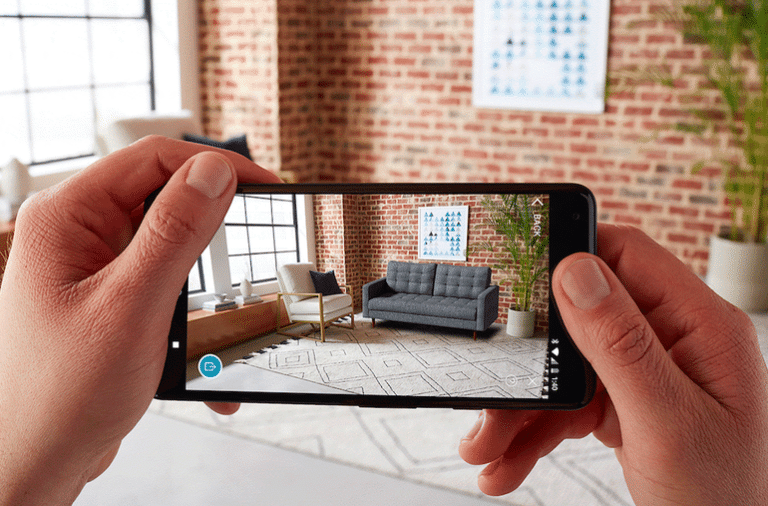
O ne of AR’s bright spots is its ability to boost sales by demonstrating products with greater dimension. Product attributes can be exposed more effectively through 3D and AR interfaces than traditional 2D images in e-commerce. That engenders a more informed buyer.
This has gone into hyperdrive over the past year as e-commerce has inflected due to retail lockdowns. AR has become more valuable under these circumstances as it can bring back some of the real-life dimension and product interactivity that’s been yanked away from consumers.
This comes in a few flavors. Product visualization involves examining products on “faces and spaces” — everything from lipstick to a couch in your living room. Visual search, a la Google Lens, meanwhile lets users identify items with their smartphone camera as a shopping launchpad.
Of course, all of the above speaks on conceptual levels in terms of AR’s value. The real proof is in the figures and performance data. Does AR actually create more immersive product experiences — in Covid and non-Covid scenarios — and does that translate to the bottom line?
Proof Positive
We’ve periodically circled back to the above question and rounded up proof points for AR’s efficacy as an advertising and commerce vehicle. That includes its ability to boost e-commerce conversions and reduce returns. Now it’s time to revisit this exercise with the latest data.
So here’s a roundup of AR commerce performance indicators for this week’s Data Dive:
— Shopify reports that products with 3D and AR visualization features achieved 94 percent greater conversions on average than non-AR benchmarks.
— Shopify separately reports that some products at the highest end of the performance spectrum can achieve 250 percent conversion boosts.
— Home Depot reports that its AR product visualization feature boosts conversions 2x-3x over eCommerce benchmarks.
— Gunner Kennels has achieved a 40 percent lift in conversions using AR visualization. It also saw a 5 percent decrease in returns and a 3 percent boost in cart conversion rates.
— Syte reports that its visual search function — allowing users to identify items with their camera then search similar/complementary products — boosts conversions 177 percent.
— Herschel Supply Co reports that its AR furniture visualization feature led to a 152 percent increase in revenue per visit.
— Champs Sports’ AR shippable lens on Snapchat achieved an 8 percent average share rate — 5x greater than non-AR benchmarks
— 3D and AR design platform Vectary announced in October that it has seen a 300 percent increase in AR product views since the beginning of the pandemic.
New Meaning
So there you have it. Though some of the above data indicate usage increases and social sharing, the AR-driven conversion lifts that make up the bulk of the list are proof positive. This is just the latest batch of data (see others here) and we’ll continue to collect them.
You may also notice that the terms “3D and AR” are used above. For those unfamiliar, 3D product visualization involve product models you can spin. AR has the additional distinction of activating your camera to place the model in your space. Google Swirl is a good example of both.
Lastly, to circle back to an earlier point, the value that AR adds to e-commerce is evident in normal times. But it takes on new meaning during Covid-era retail lockdowns when the value of visualizing products remotely is amplified. It brings some dimension back to shopping.
That dynamic is clear, but it’s unclear what will happen next. Will the tools discovered during this period create permanent habits through a “mere exposure effect?” If so, it could bode well for AR’s sustained use in a post-Covid world, and its continued rise as a shopping utility.

